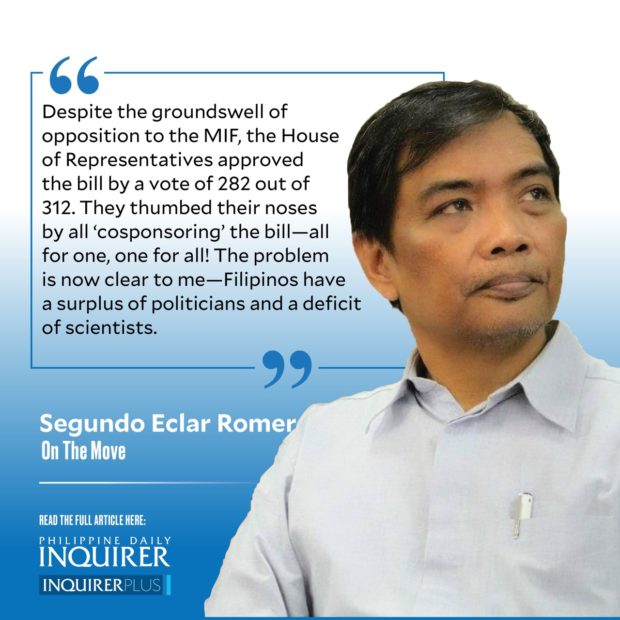We need more scientists, not politicians
 On Tuesday, Dec. 10, the US Department of Energy announced that scientists at the Lawrence Livermore National Laboratory’s National Ignition Facility (NIF) in California achieved a breakthrough in nuclear fusion technology. They generated more energy than they put in—a net energy gain—in a nuclear fusion experiment for the first time in a quest spanning 60 years.
On Tuesday, Dec. 10, the US Department of Energy announced that scientists at the Lawrence Livermore National Laboratory’s National Ignition Facility (NIF) in California achieved a breakthrough in nuclear fusion technology. They generated more energy than they put in—a net energy gain—in a nuclear fusion experiment for the first time in a quest spanning 60 years.
Fusion is, in simple terms, the combination of two very light nuclei into a heavier one that releases energy. The alternative path is nuclear fission—the release of nuclear power by splitting the atom—as in the atomic bomb or in nuclear power plants as a source of nuclear energy.
Such attainment of fusion has been considered the technological tipping point for limitless, carbon-free, clean, and safe source of power—the kind generated by the sun. Part of that process was astounding in itself—generating in their laboratory here on earth the combined heat from over a hundred lasers to produce 150 million degrees, twice the heat at the center of the sun.
I was teary-eyed when I watched the announcement and the presentation by the six scientists that spearheaded the painstaking and exacting effort required to achieve the moment of “ignition.” The collaborative, crisp presentation by these scientists, though brief, was such a clear affirmation of the philosophy of science and the canons of experimentation that graduate school drills into students.
What swept through me were images of the potential that this new achievement implies for giving the world hopeful options for stepping back from the brink of a carbon-fed climate catastrophe on the one hand and a possible escalation of the Russian war on Ukraine.
What resonated with me the most were the private stories of how two of these six scientists recounted how they got started in their careers in nuclear fusion technology. As college undergraduates, they had the occasion to visit the NIF, and that has served as a career beacon since.
This brings me to apply lessons to the Philippines. The most important is motivating and incentivizing our youth with scholarships, but also with early and meaningful engagements with tangible and living monuments to science and technology.
We should have regular visits to the Philippine Institute of Volcanology and Seismology, Philippine Nuclear Research Institute, and National Science Complex at UP Diliman, where new structures like the National Institute of Molecular Biology and Biotechnology Building at UP Diliman and the Marine Science Institute are located.
In the regions are the Science City of Muñoz and the science city of Los Baños. Spread across the nation are the 12 regional campuses of the Philippine Science High School, as well as 38 niche centers in the regions for research and development or NICER embedded in a network of universities nationwide.
Looking at my own awakening to what a progressive nation is and could be, I was lucky to be part of a Rotary Interact Club that brought high school campus leaders from Luzon to marvel at automotive and industrial plants, and food and other factories using modern equipment and modern transport and communication facilities in Manila during the mid-1960s.
Hearing the news on fusion, I felt like seeing a shooting star and turning around instinctively to exclaim to my neighbors, “Did you see that?” As I turned from the news to gaze at the Philippine landscape, I was saddened by the stark contrast. What I saw was a nation in hopeless disarray over the Maharlika Investment Fund (MIF). Where was science in all of this?
What I saw was the cry in the wilderness by National Scientist Raul Fabella, the head of the social science division of the National Academy of Science and Technology warning Congress, the Marcos Jr. administration, and the Filipino people of how the Maharlika Investment Fund, no matter how tweaked, was flawed from the start.
Despite the groundswell of opposition to the MIF, the House of Representatives approved the bill by a vote of 282 out of 312. They thumbed their noses by all “cosponsoring” the bill—all for one, one for all! The problem is now clear to me—Filipinos have a surplus of politicians and a deficit of scientists.
doyromero@gmail.com




















